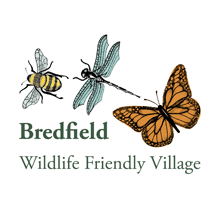This article is about pigeons. I have a suspicion that, for many people, this might not seem the most engaging and endearing subject. OK, what if I was to say that this article is about doves? You know: white dove of peace; the nice little symbol of Twitter (before it was replaced by that horrible X), the two Turtle Doves in the Christmas Carol. The word ‘dove’ has altogether more positive connotations than the word ‘pigeon’. But pigeons and doves both belong to the same family of birds (Columbidae), and which term is used is interchangeable and quite arbitrary. The Common or Feral Pigeon, found in every town and city in the world, is an urbanized version of the Rock Dove.
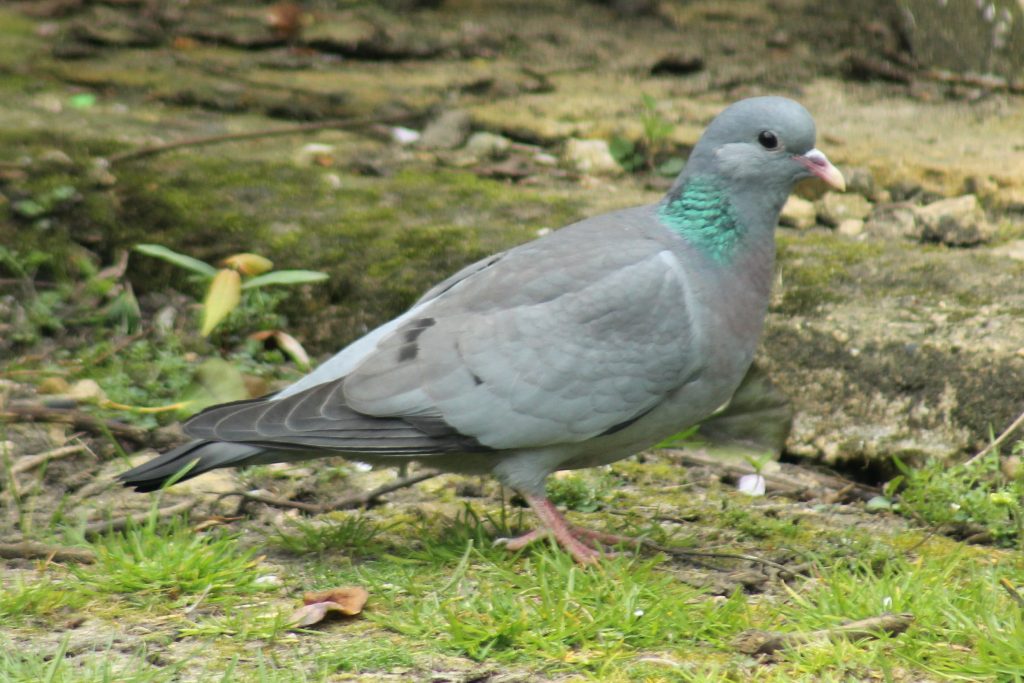
A Stock Dove
Let’s look a bit a bit more about the range of attitudes that humans have about pigeons and doves. Then we can examine the natural history of the pigeons and doves that you can find around Bredfield. (From now on, I’m going to use the term ‘pigeon’ to cover all birds in this family.)
Let’s begin with a brief mention of the relationship between Christianity and pigeons. In his book ‘Birds and People’, Mark Cocker says that “Dove symbolism permeates Christianity and is used most significantly to connote the abstract notion of the Holy Spirit” 1. In the story of Noah’s Ark, a pigeon is twice released to see whether the water has abated. After returning with a negative report the first time, the pigeon is released again: “And the dove came in to him in the evening and, lo, in her mouth was an olive leaf pluckt off; so Noah knew that the waters were abated from the earth”. If you visit Ely Cathedral, you can see the return of the pigeon depicted in this stain glass window:
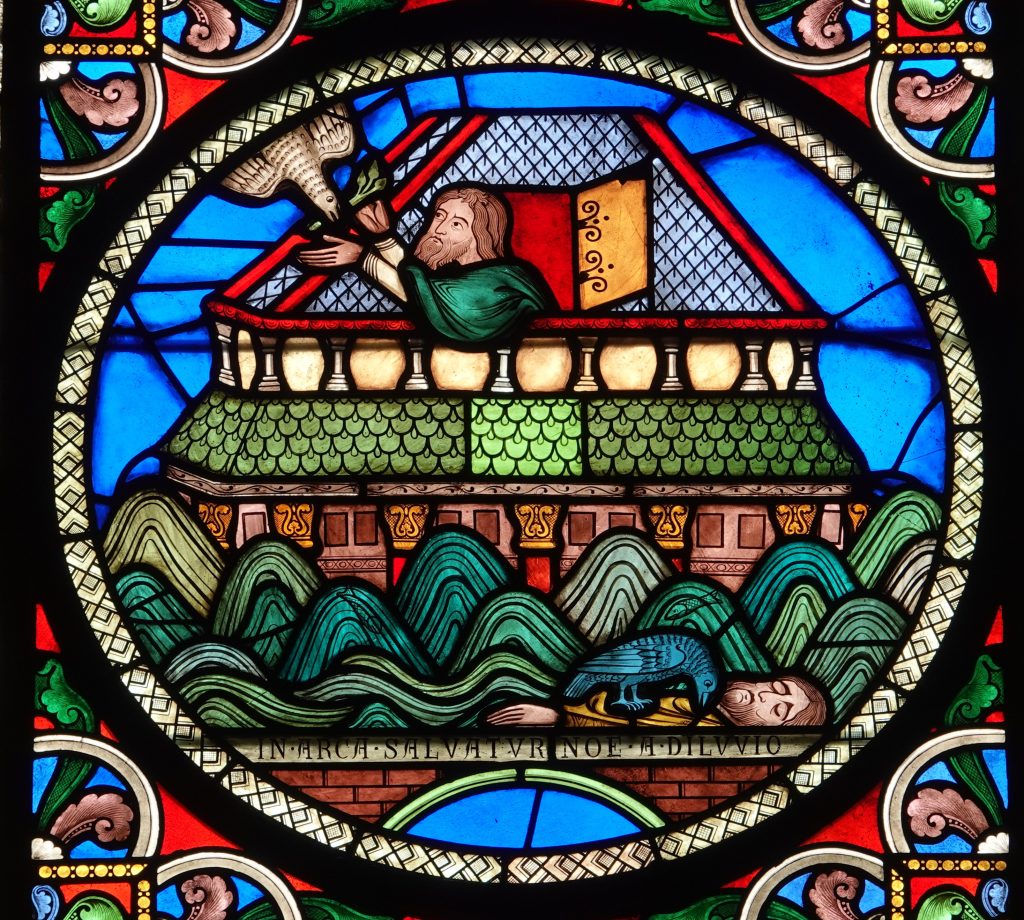
Noah receives the dove carrying olive leaves – Ely Cathedral
Pigeons have lived in a close relationship with human for millennia. Dovecotes were found to have existed in the Greco-Roman period in Egypt from 330 BC. For centuries, pigeons have been our messengers, with the last ‘pigeon post’ (in remote India) only recently replaced by email. The ‘homing’ instinct of pigeon has been a subject of fascination (there remains a large population of ‘pigeon fanciers’) and practical use. Some of the pigeons carrying messages from war-torn Europe received military medals.
All of the above is on the positive side. However, on the negative side, pigeons are also viewed as either an annoyance (their ‘cooing’ waking you up in the morning, or their droppings messing up city streets) or harmful vermin. You don’t even have to step outside Bredfield to hear the guns that blast them out of the sky. The story of extinction in the natural world is linked to this family of birds. The Dodo was a pigeon; albeit a large one. Millions of Passenger Pigeons could once be seen in the skies over north America, but it was hunted to death and became extinct over a 100 years ago.
We certainly have a very ambivalent attitude to pigeons! Anyway, enough social ornithology, let’s turn to a brief natural history of pigeons around Bredfield. It is, or at least has been, possible to find all five of the British species of pigeons in the local area. Indeed, some species are impossible to miss.
The ubiquitous and familiar Common or Feral Pigeon (not pictured here) is found across the globe, but it prefers towns and cities to rural villages. With the exception of the odd bird that has strayed from someone’s collection, it is actually a bird that you will rarely see in Bredfield.
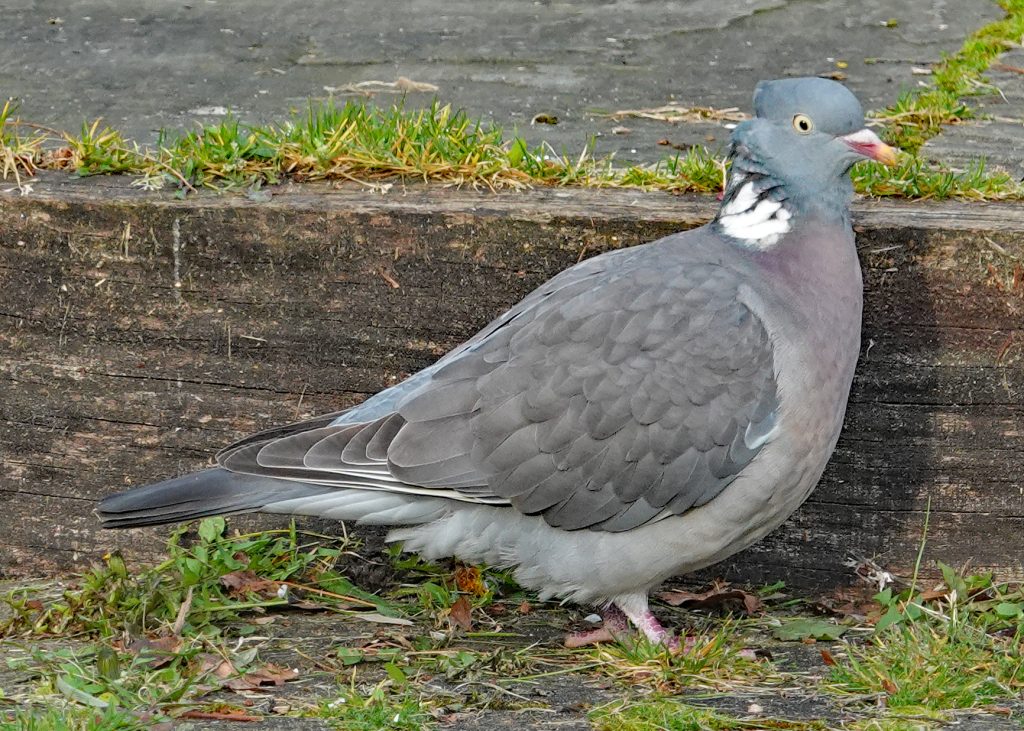
Wood Pigeon 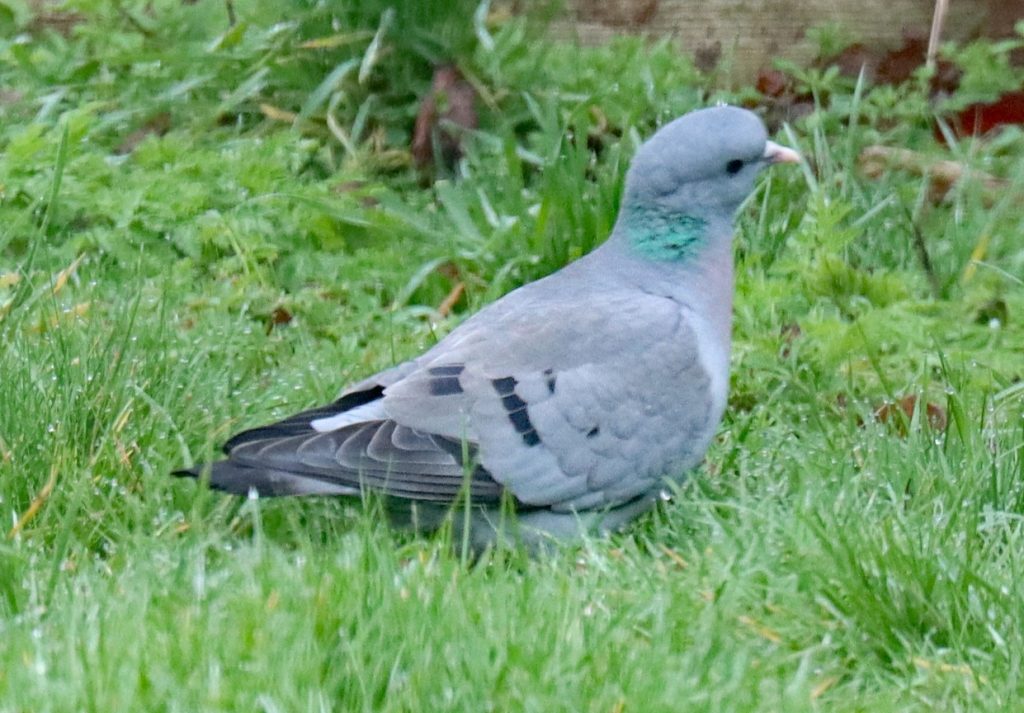
Stock Dove
The most common species you will certainly see and hear is the Wood Pigeon. Like many other creatures, the trend is for Wood Pigeons to shift their home habitat from fields to gardens. Taken as a whole, gardens constitute a much a richer natural environment. In the 2024 RSPB Big Garden Birdwatch, Wood Pigeons were the 4th most reported garden bird, just above the Blackbird. In the winter, there is a huge influx of Wood Pigeons from freezing Scandinavia. These birds feed in fields and are less likely to come into your garden.
Often confused with the Wood Pigeon is the Stock Dove. Though possessing a similar blue-grey plumage, it is a daintier bird and lacks the white collar of the Wood Pigeon. This is a bird of the countryside, though it will sometimes appear in Bredfield gardens.
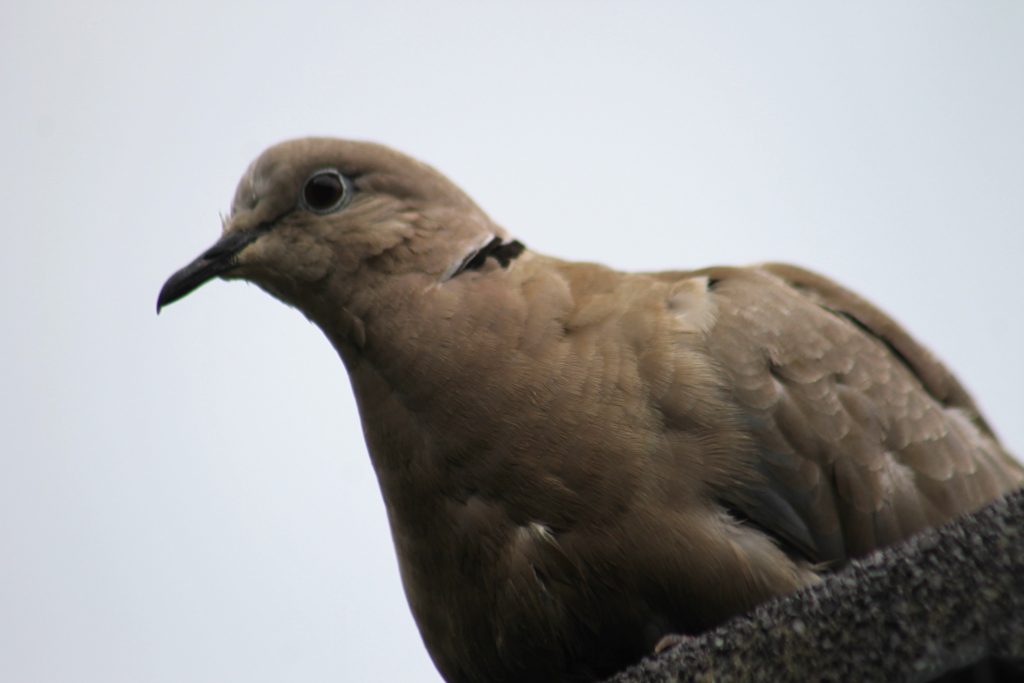
Collared Dove 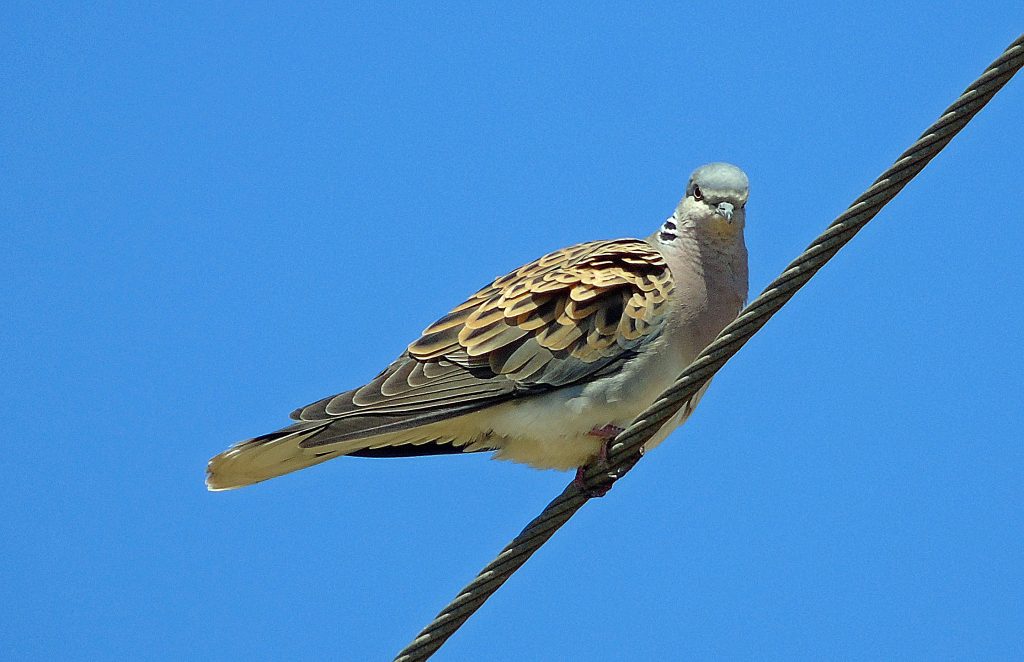
Turtle Dove
The Collared Dove is an even daintier species and is easy to distinguish, with its sandy-brown plumage and a black mark on its neck. This species is an extremely successful colonizer. It was not known in Britain before the 1950s, when twitchers streamed to Norfolk to ‘tick’ the first arrival on our shores. Now this species is everywhere.
If the populations of other pigeons are fairly healthy, the same cannot been said of the Turtle Dove. This small, migratory bird was once a fairly common summer resident in Britain. For centuries, it’s purring song would have been a familiar sound around Bredfield. At least one pair was present in the village three years ago, but I’ve heard of no reports for the last two years. Habitat loss, Mediterranean hunting and seasonal disruption brought by climate change have combined to make life most precarious for this species. The chances are that we have seen the last of Turtle Doves in Bredfield. A generation of children will now grow up singing a Christmas carol about two Turtle Doves, with no idea what these birds are. A great loss.
1. Cocker, M. (2013) Birds & People, Jonathan Cape, p234
A version of this article also appeared in ‘Nature Notes’ in the Bredfield Lantern magazine.
All photos by the author.
